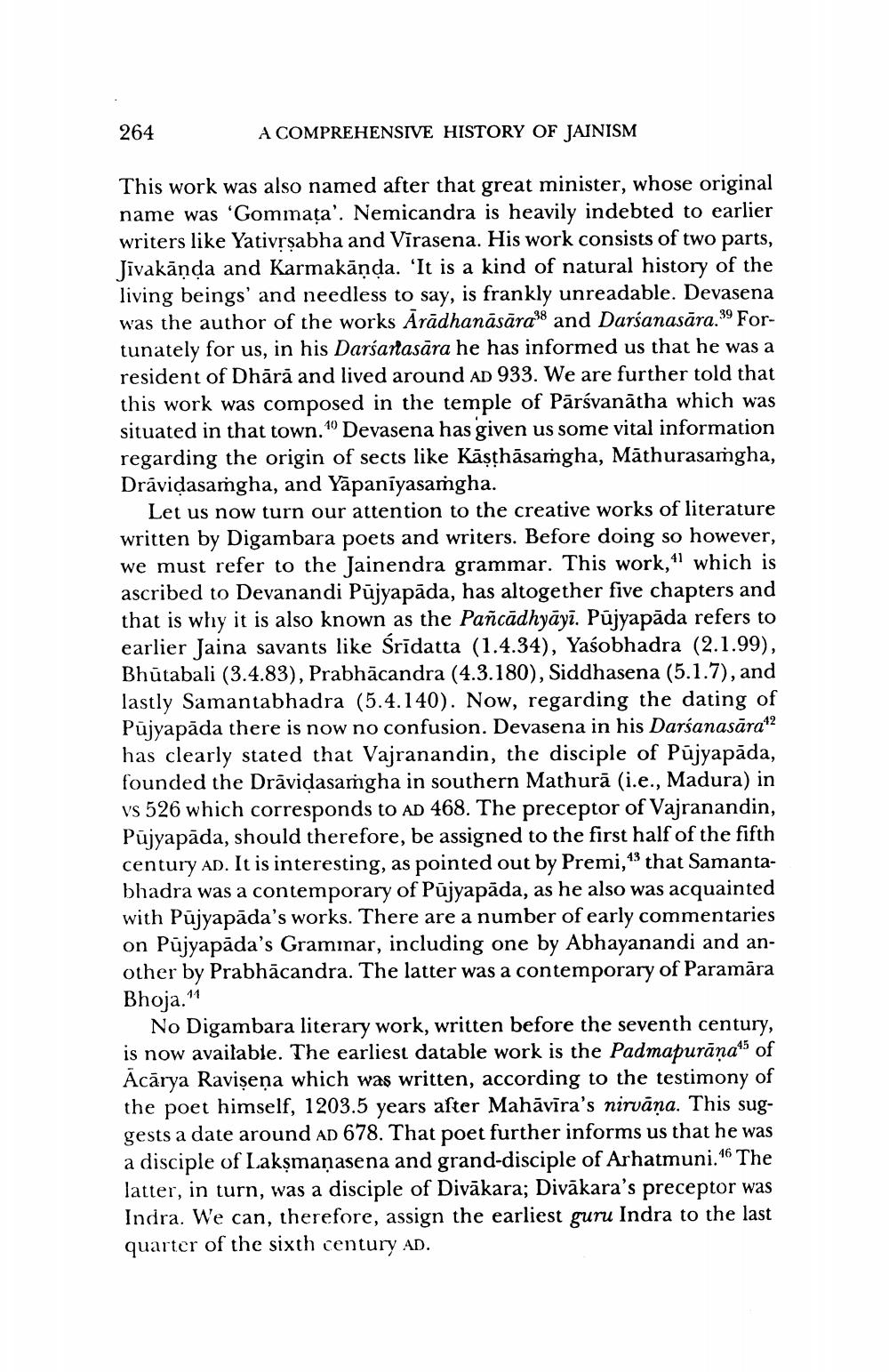________________
264
A COMPREHENSIVE HISTORY OF JAINISM
This work was also named after that great minister, whose original name was 'Gommata'. Nemicandra is heavily indebted to earlier writers like Yativrsabha and Virasena. His work consists of two parts, Jivakāņda and Karmakāņda. 'It is a kind of natural history of the living beings' and needless to say, is frankly unreadable. Devasena was the author of the works Ārādhanāsāras and Darśanasāra. 39 For tunately for us, in his Darśanasāra he has informed us that he was a resident of Dhārā and lived around AD 933. We are further told that this work was composed in the temple of Pārsvanātha which was situated in that town." Devasena has given us some vital information regarding the origin of sects like Kasthāsamgha, Māthurasamgha, Drāvidasamgha, and Yapaniyasamgha.
Let us now turn our attention to the creative works of literature written by Digambara poets and writers. Before doing so however, we must refer to the Jainendra grammar. This work, 41 which is ascribed to Devanandi Pūjyapāda, has altogether five chapters and that is why it is also known as the Pañcădhyāyī. Pujyapada refers to earlier Jaina savants like Śridatta (1.4.34), Yaśobhadra (2.1.99), Bhūtabali (3.4.83), Prabhācandra (4.3.180), Siddhasena (5.1.7), and lastly Samantabhadra (5.4.140). Now, regarding the dating of Pujyapāda there is now no confusion. Devasena in his Darśanasāra42 has clearly stated that Vajranandin, the disciple of Pujyapāda, founded the Drāvidasamgha in southern Mathurā (i.e., Madura) in vs 526 which corresponds to AD 468. The preceptor of Vajranandin, Pūjyapāda, should therefore, be assigned to the first half of the fifth century AD. It is interesting, as pointed out by Premi,43 that Samantabhadra was a contemporary of Pujyapada, as he also was acquainted with Pujyapāda's works. There are a number of early commentaries on Pūjyapāda's Grammar, including one by Abhayanandi and another by Prabhācandra. The latter was a contemporary of Paramāra Bhoja."
No Digambara literary work, written before the seventh century, is now available. The earliest datable work is the Padmapurāņa” of Ācārya Ravişeņa which was written, according to the testimony of the poet himself, 1203.5 years after Mahāvīra's nirvana. This suggests a date around an 678. That poet further informs us that he was a disciple of Lakṣmaṇasena and grand-disciple of Arhatmuni.16 The latter, in turn, was a disciple of Divākara; Divākara's preceptor was Indra. We can, therefore, assign the earliest guru Indra to the last quarter of the sixth century AD.




